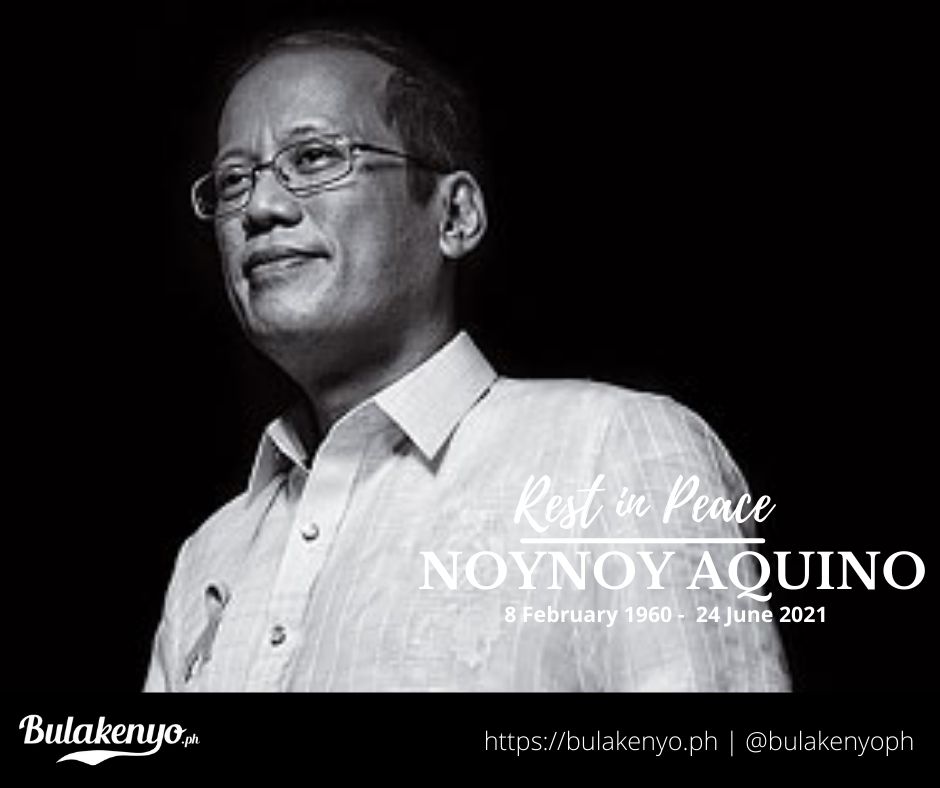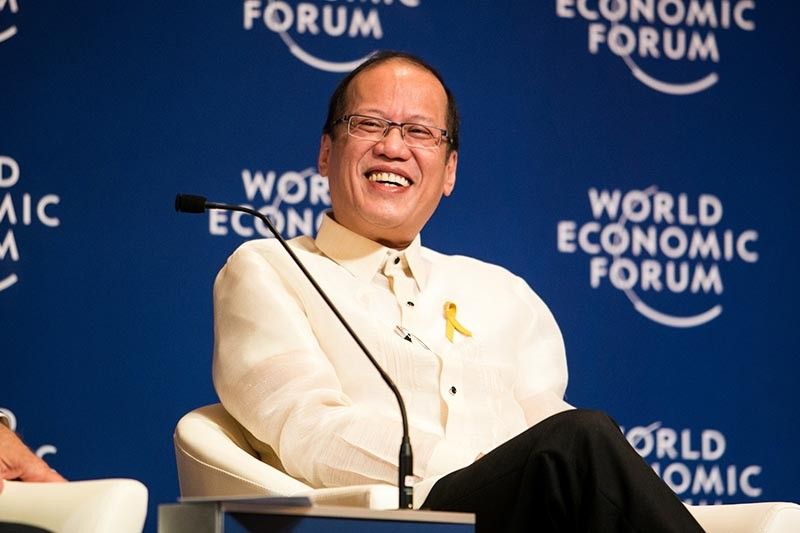Last Updated on July 31, 2021 by OJ Maño
June 24, 2021 (Thursday) – Filipinos worldwide were shocked to learn about Former President Benigno Simeon Cojuangco Aquino III’s passing. He was 61 years old. He served as the 15th president of the Philippines from 2010 to 2016.
His close friends and family call him Noy or Noynoy. When he was elected president, the media fondly started calling him “PNoy” or “P-Noy,” short for President Noynoy.
In his 5th State of the Nation Address in 2014, former President Noynoy Aquino echoed his father, late senator Benigno Aquino Jr., but not without adding a touch of his own: “The Filipino is worth living for and fighting for.”
We enjoin the nation in prayer, that Pres. Noynoy Aquino’s soul may find eternal rest, and his family takes comfort in knowing that he is in a better place. He will be missed.
Former President Noynoy Aquino dies
According to reports, the former President Benigno “Noynoy” Aquino III was rushed to the Capitol Medical Center in Quezon City Thursday morning. A few hours later, the Aquino family confirms Noynoy’s untimely demise due to renal disease secondary to diabetes. The former president died in his sleep at 6:30 am on Thursday, June 24. Aquino was the only son of former senator Benigno “Ninoy” Aquino Jr. and former President Corazon Aquino.

“It is with profound grief that on behalf of our family, I am confirming that our brother, Benigno ‘Noynoy’ Aquino III, died peacefully in his sleep,” the family said in a statement read by Pinky Aquino Abellada, one of four surviving sisters.
“His death certificate pronounced his death at 6:30 a.m. due to renal disease secondary to diabetes.” According to reports, Aquino had been battling numerous illnesses since 2019.
“Bago pa man ang pandemic, labas-masok na siya sa ospital. Nais naming magpasalamat sa lahat ng mga doktor, at sa buong medical team na nag-alaga sa kapatid namin. Naramdaman namin bilang mga kapatid niya that they did everything to make him comfortable [Even before the pandemic, he had been in and out of the hospital. We want to thank all the doctors and the whole medical team who took care of our brother. As his sisters, we felt that they did everything to make him comfortable],” said the Aquino family in an official statement.
The presidential palace offered condolences to Aquino’s family.
President Rodrigo Duterte declared June 24 to July 3 as a period of national mourning, with the national flag to be flown at half-mast on all government buildings.
“I offer my heartfelt condolences to the Aquino family,” Duterte said in a speech. “Please accept the love and the prayers of a grateful nation.”
Read ‘Set aside differences to pay respect to Aquino’: Duterte
United States President Joe Biden paid tribute to the late former Philippine President Benigno Aquino III on Friday, June 25, recalling the “selfless dedication” Aquino had when serving as the country’s highest official.
“He will long be remembered for serving his country with integrity and selfless dedication,” he said.
Biden continued: “President Aquino’s steadfast commitment to advancing peace, upholding the rule of law, and driving economic growth for all Filipinos, while taking bold steps to promote the rules-based international order, leaves a remarkable legacy at home and abroad that will endure for years to come.”
The cremated remains of former President Noynoy Aquino were laid to rest beside his parents, former President Cory Aquino and former senator Ninoy Aquino at the Manila Memorial Park in Parañaque City last June 26.
Benigno Noynoy Aquino III and his Bulacan Roots
Benigno Noynoy Aquino III’s grandfather, Jose Cojuangco, was born in Malolos. The Cojuangco ancestral house still stands today, just a few meters away from the Barasoain Chuch. Noynoy served as a senator from 2007 to 2010 before being elected as President in 2010.
Read 7 Notable Philippine Senators From Bulacan — From 1900s to Today
Notable Accomplishments during Pres. Noynoy Aquino’s Term
PH arbitral win on West Philippine Sea
This is probably the biggest legacy for Noynoy Aquino’s administration. In 2016, the Permanent Court of Arbitration in The Hague unanimously ruled in favor of the country. It rejected China’s sweeping claims over virtually the entire sea areas falling within the “nine-dash line.” The tribunal also found that China had caused “severe harm” to the marine environment because of its land reclamations.
Despite the milestone ruling, Beijing still refuses to acknowledge the Philippines’ victory.
Walang Wang-wang Policy
In a Facebook post of Harvey S. Keh of Kaya Natin! Movement for Good Governance and Ethical Leadership group said that, “Walang Wang Wang is not just literally PNoy’s order to stop politicians with their police escorts cutting the traffic lines which has so often been the norm in our country but more importantly, it showed the true meaning of being a government leader which is to be the public’s servant. As a public servant which many politicians claim to be, hindi ba dapat mas inuuna ang taumbayan kaysa sa sarili nila and when PNoy announced this, it immediately sent a signal that things cannot be business as usual in our country.”
“PNoy showed us that indeed TAYO ang BOSS niya at BOSS ng mga pulitiko. Walang Wang Wang also means no one is above the law. Pantay pantay ang bawat Pilipino. Walang dapat nauuna dahil lamang sa kanyang kapangyarihan o yaman. By establishing this early on in his Presidency, it served as a warning to all our political leaders that he will treat everyone whether you are friend or foe equally. This was shown when the PDAF Napoles Scam happened when his administration put to jail 3 powerful Senators for their involvement in this scam. At that time, these 3 Senators were allied with him, kakampi niya itong tatlong ito,” he added.
Keh continued: “Walang Wang Wang also means respect for the rule of law. No cutting of lines, no shortcuts, no cutting of corners. Dapat lahat sumunod sa batas, dapat lahat pantay pantay.”
Sin Tax Reform Law
Republic Act 10351, or the Sin Tax Reform Law, is a landmark legislation under the Aquino Administration. It is primarily a health measure with revenue implications, but more fundamentally, it is a good governance measure. The Sin Tax Law helps finance the Universal Health Care program of the government, simplified the current excise tax system on alcohol and tobacco products and fixed long-standing structural weaknesses, and addresses public health issues relating to alcohol and tobacco consumption.
AFP Modernization Act of 2015
In 2015, former President Benigno Simeon Cojuangco Aquino III signed Republic Act No. 10349 or the new AFP Modernization Act (Armed Forces of the Philippines), which sets the country on track for a 15-year military modernization effort and upgrade.
K-12 Program
President Benigno Simeon Cojuangco Aquino III signed the Enhanced Basic Education Act in 2013, with the first batch of senior high school students seen two years later. The measure faced petitions before the Supreme Court, but the court upheld the law in 2018.
The passage of the Enhanced Basic Education Act of 2013 places the country’s basic education curriculum on par with international standards. The law, which introduces two additional years of basic education and makes Kindergarten mandatory among five-year-olds, decongests the education cycle—thus providing students sufficient time for mastery and preparing graduates for tertiary education, mid-level skills development, employment, and entrepreneurship. K to 12 fulfills President Aquino’s long-standing agenda to make education the central strategy for investing in the country’s most important resource: the Filipino people.
RH Law of 2012
President Benigno Simeon Cojuangco Aquino III made history in enacting the Responsible Parenthood and Reproductive Health Act of 2012, a measure that provides Filipinos with the reproductive health information, services, and care necessary to planning and raising families responsibly and safely. President Aquino has always maintained that he is “in favor of giving couples the right to choose how best to manage their families so that in the end, their welfare and that of their children are best served.”
“Sick man of Asia” to Tiger Economy
By 2013, the World Bank was describing the Philippines as “Asia’s rising tiger.” No longer the “Sick man of Asia,” the Philippines had joined the ranks of what emerging markets guru Ruchir Sharma termed as “breakout nations,” with the most promising economies on earth. The Philippines has enjoyed robust economic growth, even surpassing China during the first quarter of 2016 with 6.9 GDP growth.

The Aquino administration left behind an economy that is strong and stable including P1 trillion in budget for the incoming Duterte administration.
Stronger Philippine Peso
During the start of the Aquino administration in 2010, the USD-PHP exchange rate is around 46.4618 PHP. His economic reforms strengthened the country’s economy, thus making the dollar-peso exchange rate reach 40.5545 PHP in 2013—the lowest exchange rate since 2008 when we reached 40.206 PHP.
Infrastructure Projects
Contrary to misinformation by detractors, many infrastructure projects were finished or started during Noynoy Aquino’s term. In fact, the majority of the Build Build Build projects of the Duterte administration were started during his administration.
Some of which are the NAIA Expressway, Tarlac-Pangasinan-La Union Expressway (TPLEx), NLEX Harbor Link, Panglao Airport, LRT Line 2 East Extension Project, Metro Rail Transit (MRT) Line 7, Mactan Cebu International Airport, Pulilan-Baliuag Bypass road, Plaridel Bypass Road Project, and many more.
Read Aquino Administration projects to be completed during the next administration